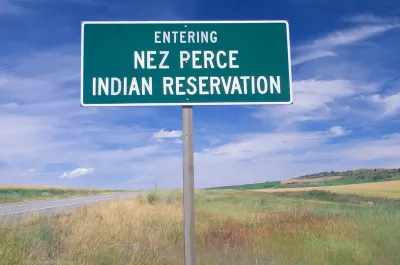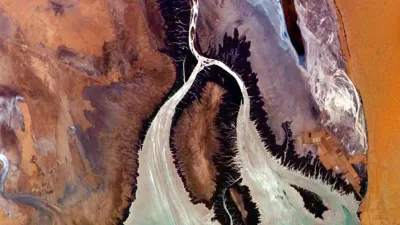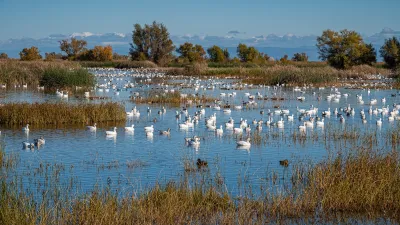In the face of federal threats to public lands and conservation efforts, indigenous groups continue to model nature-centered conservation efforts.

As federal agencies move to deregulate the exploitation of public lands, Native American leaders are developing their own plans to continue stewarding and protecting their lands.
Writing in The Conversation, Alyssa Kreikemeier notes that Native Americans were instrumental in the growth of the modern environmental movement. “Native nations regained federally recognized rights and political power at the same time as the national environmental awakening. In fact, tribal nations exercised environmental sovereignty in ways that restored federal recognition and influenced broader U.S. environmental law and policy.”
Noting the long history of Native environmental activism, Kreikemeier outlines how various tribes have taken air quality monitoring and water conservation into their own hands. “Over the decades, Native nations have partnered with federal agencies and used federal laws and funds to manage their environments. They have also built connections between tribes and nations across the continent,” Kreikemeier explains.
However, “Tribal governments have been hit hard by the shifts in federal priorities, including Trump administration funding cuts that have slowed scientific research, such as environmental monitoring and management on tribal lands.”
FULL STORY: As federal environmental priorities shift, sovereign Native American nations have their own plans

Alabama: Trump Terminates Settlements for Black Communities Harmed By Raw Sewage
Trump deemed the landmark civil rights agreement “illegal DEI and environmental justice policy.”

Planetizen Federal Action Tracker
A weekly monitor of how Trump’s orders and actions are impacting planners and planning in America.

The 120 Year Old Tiny Home Villages That Sheltered San Francisco’s Earthquake Refugees
More than a century ago, San Francisco mobilized to house thousands of residents displaced by the 1906 earthquake. Could their strategy offer a model for the present?

LA’s Tree Emergency Goes Beyond Vandalism
After a vandal destroyed dozens of downtown LA trees, Mayor Karen Bass vowed to replace them. Days later, she slashed the city’s tree budget.

Sacramento Leads Nation With Bus-Mounted Bike Lane Enforcement Cameras
The city is the first to use its bus-mounted traffic enforcement system to cite drivers who park or drive in bike lanes.

Seattle Voters Approve Social Housing Referendum
Voters approved a corporate tax to fund the city’s housing authority despite an opposition campaign funded by Amazon and Microsoft.
Urban Design for Planners 1: Software Tools
This six-course series explores essential urban design concepts using open source software and equips planners with the tools they need to participate fully in the urban design process.
Planning for Universal Design
Learn the tools for implementing Universal Design in planning regulations.
Ada County Highway District
Clanton & Associates, Inc.
Jessamine County Fiscal Court
Institute for Housing and Urban Development Studies (IHS)
City of Grandview
Harvard GSD Executive Education
Toledo-Lucas County Plan Commissions
Salt Lake City
NYU Wagner Graduate School of Public Service





























